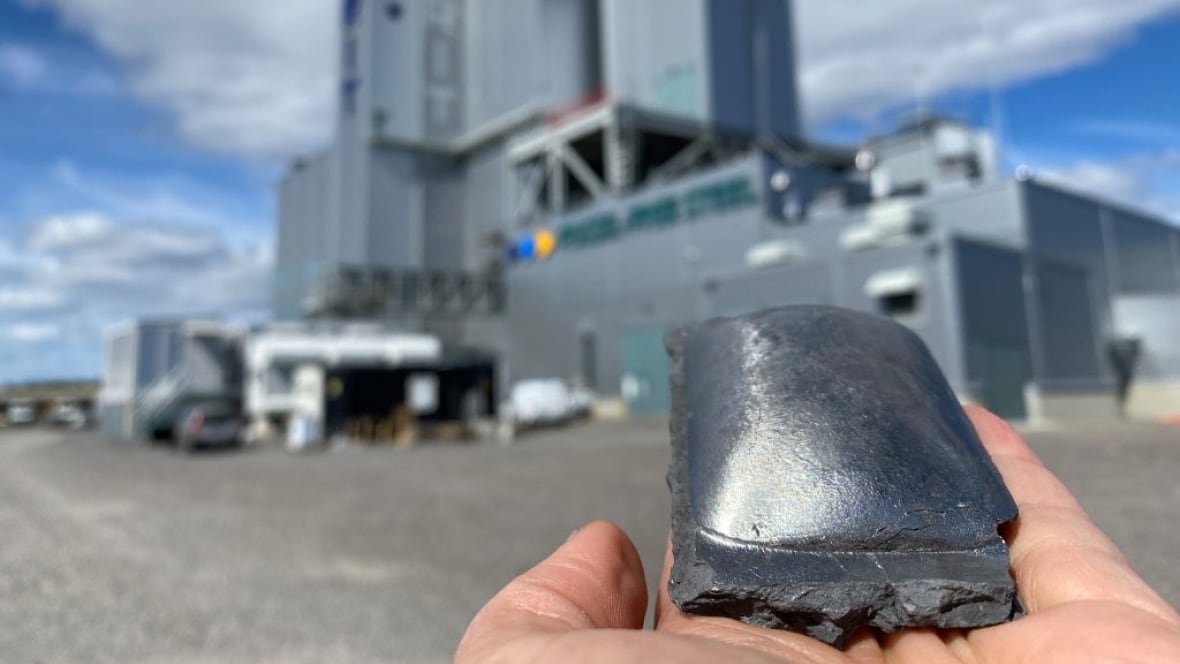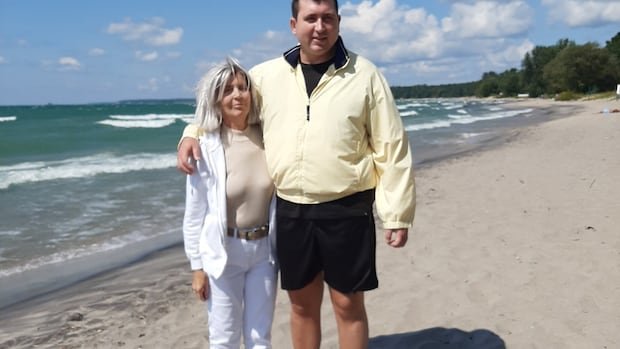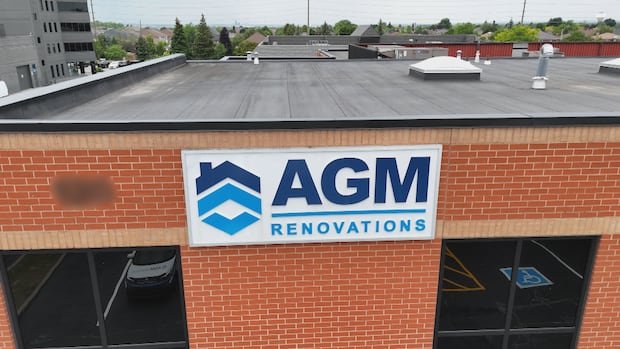Steelmaker Algoma says U.S. tariffs on steel are pushing it to accelerate its transition to electric steelmaking.
Prime Minister Mark Carney met US President Donald Trump this week in an effort to secure some relief from the crisis. 50 percent US tariff Canadian steelmakers have been struggling since June, along with Low global steel prices due to excess supply. China is blamed for that.
Algoma, in a press release last week announcing that there was obtained $500 million in government loanssaid tariffs have made operation of its blast furnace and coke oven unsustainable, and that it will abandon those operations as it “accelerates its transition” to electric steelmaking.
Meanwhile, other Canadian steelmakers face similar economic pressures and pressures to decarbonize.
Here’s why decarbonizing steel is so important, how it’s being done in Canada, and what’s needed for a successful transition in difficult times.
What impact does steel manufacturing have on the climate?
Globally, steel production generates around Seven to nine percent of global greenhouse gas emissions. that cause climate change.
In Canada, steel produced approximately 13.1 megatonnes of CO2 or in 2023 — equivalent to the emissions of about three million gasoline-powered cars, or two per cent of Canada’s emissions.
Canada’s steel industry is based in Ontario, and the three largest industrial CO2 emitters in the province are all steel plants. Together they generate 40 percent of industrial greenhouse gas (GHG) emissions in the provincemore than the refining, forestry, mining and chemical sectors combined.
The federal and provincial governments have invested $2 billion to convert Ontario plants to low-carbon energy sources.
A major Canadian steelmaker, Algoma Steel, will receive $500 million in federal and provincial loans to help the industry survive in the face of U.S. tariffs.
Why does steel manufacturing generate so many carbon emissions?
Emissions come from two main sources:
- Fossil fuels (usually a coal-derived fuel called coke), which are burned to generate the high temperatures needed to make steel.
- CO2 is generated as a waste byproduct in the chemical reaction needed to make steel (which is 99 percent pure iron, with a small amount of carbon) from its raw materials, primarily iron ore and coke.
Ross Linden-Fraser is a research leader at the Canadian Climate Institute. He said that in Canada, steel mills are using the “two most popular routes” to decarbonize.
Algoma: Electric arc furnaces for secondary steel industry
Algoma is completely eliminating the CO2-generating part of the chemical reaction equation by not making steel from iron ore at its Sault Ste. Marie plant. Marie, Ontario, is closing the blast furnace and coke oven that were used to make that.
Instead, it is shifting entirely to “secondary” steelmaking, which recycles scrap steel or relies on refined iron instead of iron ore. That still needs to be heated to very high temperatures, but it can be done with an electric arc furnace (EAF), without fossil fuels.
Algoma announced last July which had achieved its first steel production with this technique.
CEO Michael Garcia told CBC Up to the north This is expected to reduce the plant’s carbon emissions by up to 70 percent and allow it to increase its output by a third. It also requires fewer workers than operating the blast furnace and coke oven, Garcia said.
10:17Algoma Steel produces first steel from its new eco-friendly electric arc furnaces
Algoma Steel in Sault Ste. Marie Marie says it has produced its first steel using an electric arc furnace. It comes amid unprecedented uncertainty for Canada’s steel industry. CEO Michael Garcia tells host Jonathan Pinto about the significance of the milestone.
Last week, the company estimated that the final cost of the EAF project would be $987 million.
Electric arc furnace technology has been around since the 1960s, but it has made great strides, Garcia said. Initially, it could only produce low-quality steel, such as rebar for construction. Now, “you can really make any grade of steel you want,” he said, and 70 percent of American steel is produced this way.
The only type of steel that is “very challenging” is extremely clean steel, Garcia said, since it requires very clean scrap or virgin iron as raw material.
Of course, secondary steel production is limited by access to sufficient raw materials, such as scrap. Linden-Fraser said it also depends on whether a plant’s customers can work exclusively with secondary steelmaking products.
McMaster University engineering professor Giancarlo Dalle Ave explains how “green” steel is made using electric arc furnaces and direct reduction iron, and why it’s such a big change from traditional methods.
ArcelorMittal Dofasco: replace coal with natural gas and hydrogen
Mohd Adnan Khan, a researcher at the University of Alberta, said not all steel demand can be met through secondary steel manufacturing alone.
One way to continue primary steel production from raw materials with a reduced carbon footprint is to replace coal and coke with hydrogen.
Like coke, hydrogen can chemically react with iron ore to generate pure iron. This process is called direct reduced iron (DRI). It has already been used successfully in Europe to produce thousands of tons pure iron without fossil fuels from 2021.
This is the technology that ArcelorMittal Dofasco’s Hamilton plant has.
Khan is co-author of a 2023 report on decarbonizing steel with hydrogen commissioned by the Canadian Steel Producers Association and Transition Accelerator, a non-profit organization focused on decarbonization strategies.
He said that initially the Hamilton plant would struggle to source enough affordable green hydrogen. But a “hydrogen-ready” plant can also use natural gas or methane, just with a larger carbon footprint. And hydrogen could be gradually mixed with natural gas.
“Once you have the right economics,” Khan said, “you can switch to 100 percent hydrogen.”
(In fact, a small amount of natural gas would always be needed to add the 0.05 to 0.5 percent carbon needed to strengthen steel.)

Initially, ArcelorMittal Dofasco intended demolish its coke plant to make way for a DRI plant in 2023. The DRI plant would produce iron to fuel electric arc furnaces, which would also be installed. That would allow it to phase out coal and reduce emissions by 60 percent or three million tons a year by 2028, equivalent to taking 725,000 gasoline-powered cars off the roads, the company estimated.
The project was expected to cost $1.8 billion, with the federal and Ontario governments pledging to cover half.
However, at the end of August 2024The coke plant was still standing and the necessary supply of natural gas to the plant had not yet been approved. CBC News reached out to ArcelorMittal Dofasco for an update, but at the time of publication, had not yet received one.
Ontario also has a third major steel plant, run by Stelco (bought by US-based Cleveland-Cliffs in 2024) in Haldimand County. Linden-Fraser said she has not yet chosen a decarbonization strategy.
What does it take to keep this going in tough times?
Linden-Fraser said the government so far continues to balance its short-term support for the industry in difficult times with the long-term focus on decarbonizing the steel industry.
He said industrial carbon pricing has incentivized these green steel projects, and both the federal and provincial governments have offered financial support.
Additionally, this year, the federal government updated its green procurement standards that construction projects prefer steel produced with low emissions.
“This is a big step,” Linden-Fraser said, given that the federal government is the largest purchaser of goods and services in Canada.
“It seems pretty clear that the future of competitive steel is green,” he said. “And that’s why it’s really important to have policies that keep the industry focused on that long-term goal.”










